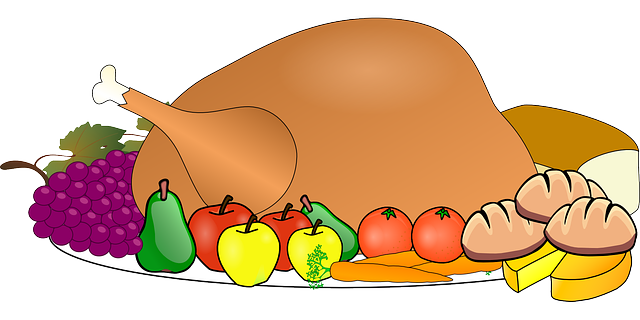Most people in the United States enjoy simple, iconic dishes such as hamburgers and hot dogs. The typical American cuisine is “rough and tumble”, using fresh ingredients and keeping things as they are; but there is also a great love of many other national cuisines, with a wide variety of dishes from around the globe. Over time, food has been refined and fused to create the rich and varied American diet that characterizes today’s regional dining community.
01 History of the evolution of American food culture

Prior to the 16th century, American Indians were the original inhabitants of the United States, and at that time they were the face of the American diet. At this time the foundation of the American staple food – corn – was laid. Due to the low standard of living, the vastness of the territory, and the cultural dispersion of the population, it was in a state of keeping subsistence and did not form a national diet or a well-developed gastronomic system. In fact, there has been no royal family in the United States, and as royal cooking helped to unify and advance the culinary arts of the country, the United States lacked the quality of life of a royal family, and here the emphasis was simply on the drive to eat and drink, with gastronomic development being relatively slow in the course of history.
In the 16th century, the Spaniards from Mexico came to America and they really managed to intermingle their ideas with those of the Indians. As in the case of taco roasts, the Spaniards brought pork; the Indians served tacos. Later, the Puritans immigrated to America in large numbers, bringing with them the spirituality of “eating to live”, practical simplicity, and a lack of concern for the taste of food. They believed that people ate and digested in order to live another day and that no one in their right mind would discuss the taste of a particular food except in terms of vanity. Their values about food and drink were a serious obstacle to the development of the culinary arts.
In the 17th and 18th centuries, European immigrants arrived in large numbers in the United States, laying the foundation for traditional American cuisine – British cuisine. American cooking has its roots in England because most Americans are descended from British immigrants. Of course, American cuisine has its own special characteristics. The United States is a large country with a good climate, a wide variety of food, easy transportation, excellent refrigeration facilities, and the ability of cooks and housewives to choose their food at will and with the help of cooking equipment, to produce beautifully tasty and nutritious food.
American breakfasts are dominated by a variety of fruit and slightly salty-sweet snacks, with a strong preference for salads of all kinds. Americans cannot cook without fruit as an accompaniment and are fond of steak dishes, including fried dishes, which are also everyday food. With the arrival of other immigrants. Africans had a major impact on American cooking, bringing some novel food ingredients and condiments to the American table – croquettes, yams, peanuts, etc; adding to the choice of dishes available in the American diet.
The arrival of Chinese and Italian immigrants to the United States in the second half of the 19th century initiated the most important improvements in the history of the American diet. A variety of new Americanised Chinese foods emerged, such as ‘fried hash’, fried egg rolls, wonton soup, fried rice, shredded chicken chow mein, and baby back ribs. Unfortunately, Chinese food was never the most popular food in the United States because although most Americans ate it, they did not usually try to make it themselves at home. However, Americanised Chinese food did play an exceptionally important role: it opened the eyes and tastes of almost every 20th-century American to mouth-watering, exotic Asian food, and paved the way for the integration of many Asian cuisines into the eating habits of our population.
Americanised Italian food has arguably dominated American restaurant culture and is widely popular, and its real triumph has been in American homes. Pizzas, spaghetti with marinara sauce, branded macaroni with tomato salsa, meatballs, and veal with parmesan, whether frozen, home-delivered, or home-made, all play an immensely important role in the American daily diet. Moreover, it successfully proved that food from another country could not only be an interesting treat for a change of flavor in America but could also become firmly established as part of the mainstream American diet.
Other subsequent years of the 20th century saw the introduction of a diverse group of immigrants and the incorporation of more exotic cuisines into the American diet, for example, Americans celebrated the French approach to food as a cornerstone of the American diet; giving Danish pastries a firm place in the American breakfast.

Americans are generally more casual in their eating. They are not used to using more spices in their cooking, but rather they keep spices on the table to season themselves. But Americans love Chinese food.
Americans are characterized by the following dietary preferences.
1. They pay attention to the reasonable combination of dishes and the nutritional value of food.
2. The general taste is light, with a slight sweetness to suit the palate.
3. The staple food is usually rice, but they also like to eat siu mai, dumplings, spring rolls, chicken soup wontons, etc.
4. As a side dish, they like to eat chicken, duck, fish, beef, pork, eggs, seafood, and game; among vegetables, they like to eat potatoes, cucumbers, lettuce, tomatoes, green beans, mushrooms, cabbage, etc.; they like to use oil, vinegar, salt, monosodium glutamate, pepper, chili paste, etc.
5. Prefers dishes prepared by frying, stir-frying, and pan-frying methods.
6. Prefers Chinese sous-vide, Sichuan, and Cantonese cuisine.
7. Enjoys aromatic chicken, fried eggplant, fried pork loin, fried prawns, sweet and sour fish, dry-roasted fish, fish with five fingers, pork with pork, dried scallops with mushroom and persimmon milk, winter melon balls, shredded apples, and other dishes.
8. They love brandy and whisky, but also the wine, mulberry wine, and sweet wine, as well as Chinese Tsingtao beer, with sand-filtered mineral water and iced water as their favorite drinks, soft drinks, coffee, milk, cocoa, and Chinese fragrant floral tea.
9. They are particularly fond of mandarins, lemons, lychees, kiwis, melons, loquats, guavas, bananas, pineapples, grass carrots, and grapes.

Americans are outgoing, warm, straightforward, and unpretentious and there are many differences in their customs and manners. The United States is a country with a strong sense of time, where events start at the scheduled time and it is rude to be late. It is easy to get in touch with an American for a date, just call and the other person will happily agree to meet at the shortest possible time.
Americans also have the habit of exchanging gifts, but they avoid accepting excessive gifts, for one thing, Americans do not value the value of the gift itself, and for another, the law prohibits excessive gifts.
American society has the habit of tipping, all service items need to pay a tip, hotel doorman, room service, etc. need to pay a tip of not less than 1 US dollar, and the hotel dinner in the checkout charge 15% tip. When Americans invite guests to dinner, most of them are arranged in restaurants and clubs for official communication and are paid for by the company they work for, while close friends and relatives are invited to their homes for dinner.
The food of Americans varies from region to region and from nation to nation, with hamburgers, “hot dogs”, pies, doughnuts, and Kentucky Fried Chicken all being popular foods around the world, but American hospitality is economical and affordable, without being ostentatious or formal.
A typical family dinner is a long table with a large plate of salad, a large plate of grilled chicken or meat, a plate of fried rice, and a plate of sliced bread, as well as sweets, fruit, cold drinks, and alcohol. The guests are seated around the table, and when the host says “please”, each person picks up a plate and eats the dish they like, adding to it as they go along, eating and talking.
Americans treat guests to a meal, a glass of wine, or a weekend at the country house as a way of making friends, and do not necessarily ask the other party to reciprocate but to invite them to their own home for dinner if they have the opportunity. After the meal, the guest should express special thanks to the host, especially the hostess.

Thanksgiving is celebrated every year on the last Thursday of November. Thanksgiving is an ancient holiday created by the American people. On Thanksgiving Day, the whole country of the United States is in high spirits as people go to church to give thanks, and there are costume parades, theatrical performances, and sports competitions in cities and towns. Families return from all over the world to enjoy a delicious Thanksgiving turkey.
One of the most important meals of the year for Americans is the Thanksgiving dinner. In a country where life is fast-paced and competitive, weekday meals are extremely simple, as illustrated by the fast food culture in the United States. But on Thanksgiving night, families throw a huge feast with a staggering amount of items. Roast turkey and pie are a must for everyone from the president down to the common man. These two “treasures” embody the pioneering spirit of the American people to remember their ancestors from the past. For this reason, Thanksgiving is also known as Turkey Day.
The traditional Thanksgiving meal of roast turkey is stuffed with Stuffing, which is made from torn pieces of cornbread, white bread, and celery, before roasting. The giblets are also used to make a thick sauce (gravy). Another sauce is Cranberry Sauce, which is made from cranberries that are in abundance in September and October each year. Other sides include baked mashed potatoes, baked mashed sweet potatoes, green beans, and biscuits, to name but a few.
The final dessert, of course, is the festive melon pie. After the American Thanksgiving meal, the family is usually treated to an American football game. Although Thanksgiving is the time when millions of turkeys tie the knot for life, it is a very interesting tradition that every year the President of the United States releases a turkey from the White House to live out its life on a farm. In addition, the Macys Thanksgiving Day Parade, which dates back to 1927, is one of the most important annual events.

Some places in the United States have their own peculiar and interesting “dietary laws”.
The central city of Lexington, Kentucky, does not allow anyone to buy ice cream and put it in their pocket.
In Lake Winona, Indiana, ice cream is not allowed at the counter on Sundays.
In Waterloo City, Nebraska, it is forbidden for barbers to eat onions from 7 a.m. to 7 p.m.
In Graytown, Indiana, anyone who has eaten garlic is not allowed to enter the theatre for four hours.
In Oklahoma, it is illegal to take a bite out of someone’s beef patty.
In Columbus, Ohio, nachos are not allowed to be sold on Singles Day.
In New Jersey, if you find someone making noise while drinking soup in a public restaurant, you will be detained.








 Subscribe to my channel
Subscribe to my channel


















































